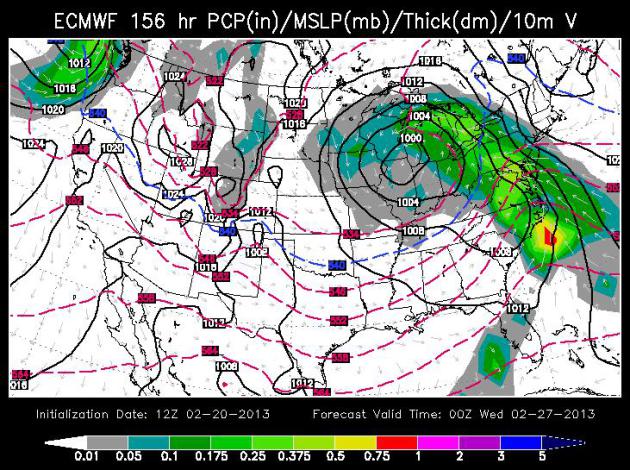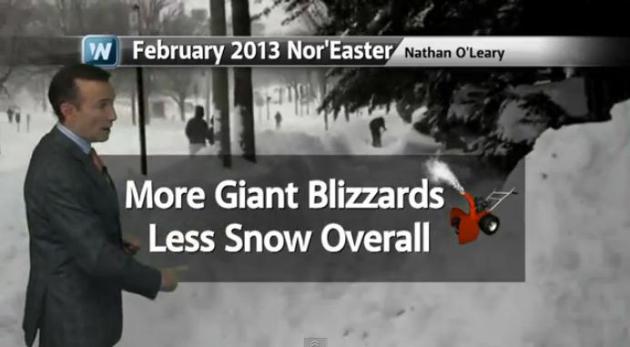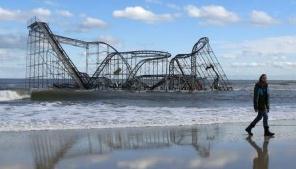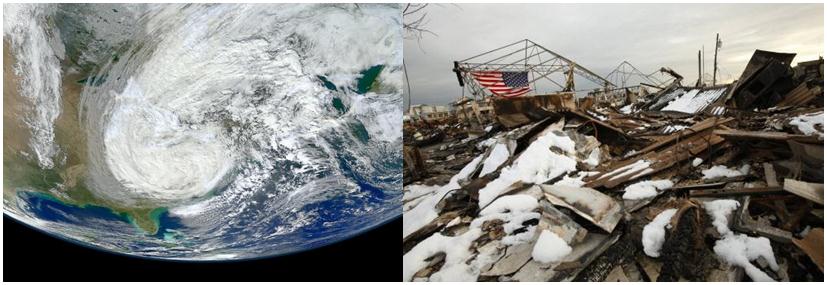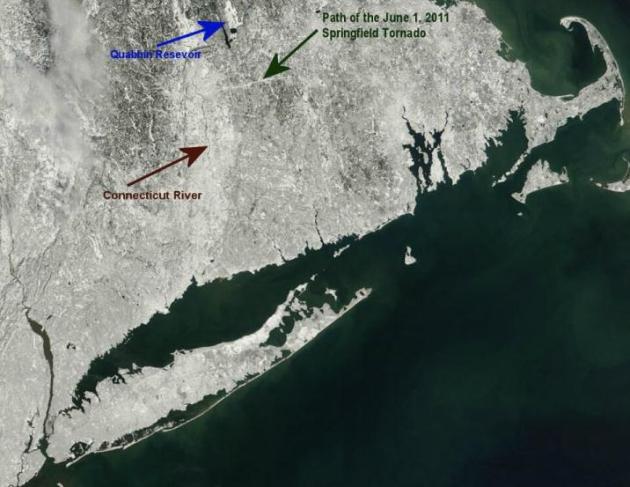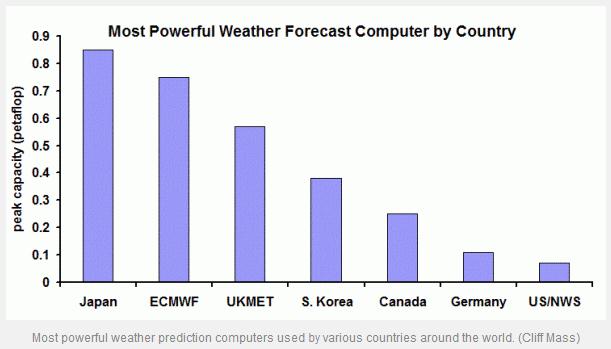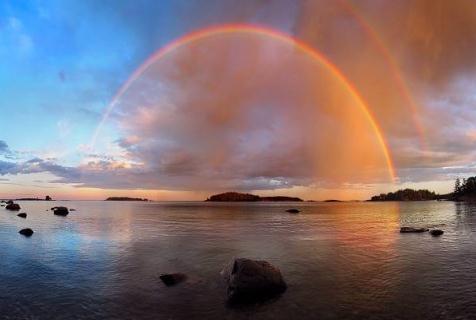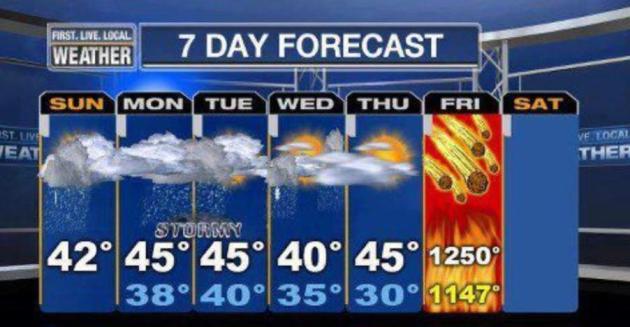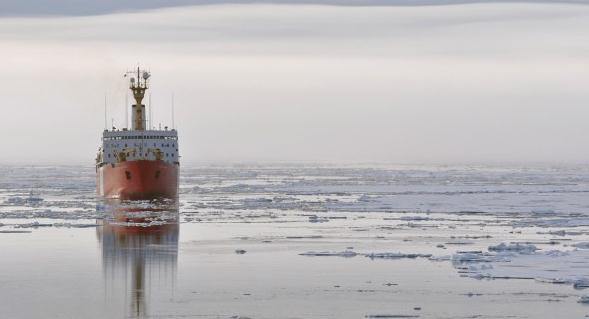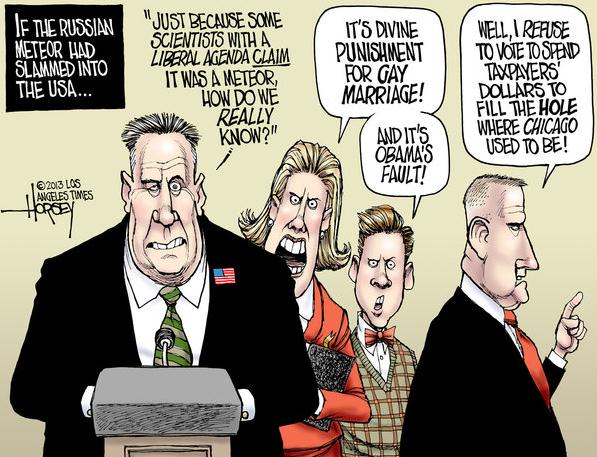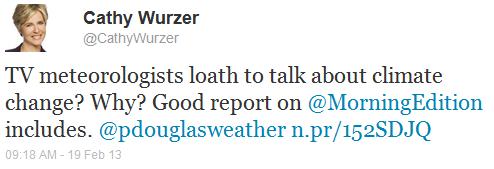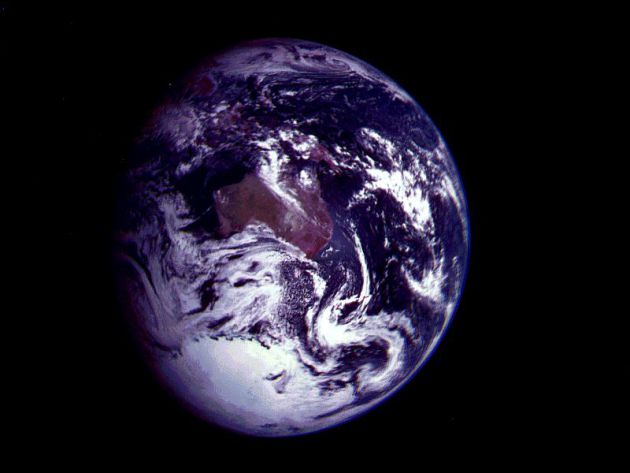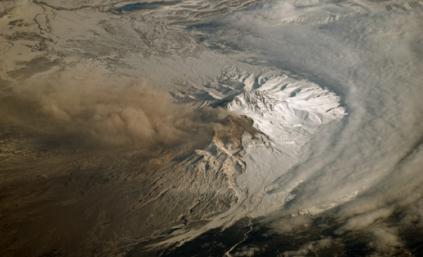Potentially Plowable
"Paul, where should I turn: local TV
meteorologists, computer models, or plowing companies, who seem to have
some of the best information?" All of the above.
Take all the snowfall predictions and divide by 2. That will be closer to reality.
Beware of models; they're only as good as the
physics involved, and the quality of weather data feeding these
simulations. The art is knowing which model to believe, and when. I've
discovered (the hard way) that it's better to be conservative with
snowfall predictions. Because Mother Nature always finds a new and
creative way to trip you up.
Travel won't be a problem today; a surge of snow
pushes in from the south late tonight. Rush hour tomorrow may be
anything but with some 2-5 inch amounts possible (over 6" parts of
southern MN).
As I've mentioned in the past - the air
temperature during a storm is as important as "how many inches?" I
expect 20-25 F tomorrow, a colder snow. Wheel tracking glazing, from
traffic compacting snow, may result in glaze ice, especially Friday AM.
The storm next Tuesday doesn't look quite as impressive; a couple inches of slushier snow?
This may be one of the best weekends of winter to get out and PLAY in that snow!
Dueling Models. Here is the GFS solution, courtesy
of Ham Weather, showing the heaviest amounts (3-5") over southeastern
Minnesota. Some 4-8" snowfall amounts are likely over Iowa, with 15-20"
amounts centered on southern Nebraska and Kansas.
NAM: Slightly More Aggressive With Snow Totals. Both
ECMWF and NNAM are predicting just over .30" liquid. If the air
temperature was 30-32 that would equate into about 3" of slushy snow.
With temperatures tomorrow forecast to be in the low to mid 20s, there
will be more air between the flakes, a slightly drier, more powdery
snowfall, so we could still see 5" from this system, even though most of
the moisture and energy will pass south of MSP.
A Tale Of Two Snowfalls. The predicted rain/snow
ratio Friday is forecast to be 1:15 to 1:17, meaning 15" of snow for
every inch of liquid precipitation. The latest NAM prints out about
.37", which equates to 4-5", give or take. The best chance of 4-5" will
probably come over the south metro. Another (wetter, slushier) snowfall
is possible Tuesday of next week.
Track: A Bit Too Far South/East. A perfect storm
track for significant snow at MSP runs from DSM (Des Moines) to La
Crosse to EAU (Eau Claire). The predicted track with tomorrow's storm
will be about 150 miles to far south east for the heaviest snow bands to
set up right over the metro, but I still believe we'll be brushed by a
few inches, probably enough to shovel/plow.
Next Week's Storm: Few Inches (Probably Not A Major Storm).
Thhe latest ECMWF (European) model pushes the track of the next storm a
little too far south/east of MSP (again) for heavy snow. We may pick up
a few inches of sloppy, slushy snow, temperatures closer to freezing
may keep freeways mostly wet. Too early to tell.
More Blizzards, Yet Less Snow Overall? I know it
sounds like a disconnect, but it's the same trend we're seeing during
the summer month: storms spaced farther apart, more time in-between rain
events, but when it does decide to rain it comes down in buckets,
torrents - tropical deluges. According to the Minnesota Climate Office
southern Minnesota has experienced 3 separate 1-in-1,000 flash floods
just since 2004. I could see one, but three? These trends are now
spilling over into winter months, the result of a warmer atmosphere
above to hold more water vapor. Basic physics. Here are more climate
science details in today's 2.30
WeatherNation Update.
$188 Billion Price Tag From U.S. Severe Weather From 2011 To 2012. Climate Progress and
beforeitsnews.com have the story; here's an excerpt: "
The
United States was subjected to many severe climate-related extreme
weather over the past two years. In 2011 there were 14 extreme weather
events — floods, drought, storms, and wildfires — that each caused at
least $1 billion in damage. There were another 11 such disasters in
2012. Most of these extreme weather events reflect part of the unpaid
bill from climate change — a tab that will only grow over time...."
- 67 percent of U.S. counties and 43 states were affected by “billion-dollar damage” extreme weather events in 2011 and 2012.
- 1,107 fatalities resulted from these 25 extreme weather events in 2011 and 2012.
- Up to $188 billion in damage was caused by these severe weather events in 2011 and 2012.
- $50,346.58 was the average household income in
counties declared a disaster due to these weather events—3 percent
below the U.S. median household income of $51,914. [2]
- 356 all-time high temperature records were broken in 2012.
- 34,008 daily high temperature records were set or tied throughout 2012, compared to just 6,664 daily record lows—a ratio of 5-to-1.
- 19 states had their warmest year ever in 2012.
Budget Cuts Threaten Weather Forecasts, NOAA Warns. Here's a clip of a story from Climate Central and
Huffington Post that made me do a double-take: "
Automatic
budget cuts set to take effect March 1 could add to the woes of the
federal government’s troubled weather satellite programs, jeopardizing
future forecasts, a top official said Friday. “It’s not going to be
pretty,” outgoing National Oceanic and Atmospheric Administration
chief Jane Lubchenco said of the package of across-the-board spending
cuts known as “sequestration.” “The sequester has the potential to wreak
havoc with so many different things, and satellites loom large within
that,” she told reporters at the annual meeting of the American Association for the Advancement of Science. “There’s just so much uncertainty. Nobody knows how long it might last, and it’s very difficult to plan for that...”
Photo credit above: "
The VIIRS sensor on the NOAA/NASA
Suomi NPP satellite passed over the central eye of Hurricane Sandy on
Oct. 25, 2012. Without the satellite data, NOAA’s weather forecasts
would become less reliable." Credit: JPSS/NOAA/NASA
Weather Satellites Could Miss The Next Hurricane Sandy.
There may be a serious gap in coverage with the POES (polar orbiting)
weather satellites; data which is fed into computer models, data which
made a tangible difference forecasting major winter storms (and Sandy)
during recent years. Here's a portion of a
Yahoo Finance article that caught my eye: "...
Since
the 1970′s, America had two sets of polar-orbiting weather satellites,
one operated by the government’s weather researchers, and the other by
military. In 1994, it was decided that combining them into one
operation would save a lot of money. After 16 years
of unsuccessful attempts to do that, the government threw up its hands
and decided to split the task, giving the weather agency the late
afternoon orbit and the military the early morning, with the mid-day
orbit shared with the European space agency. But even these separate
plans have been plagued by delays, and the GAO warns that the gap in
afternoon coverage by the weather researchers could last from 17 to 53
months. The defense department, meanwhile has decided to launch
previously mothballed satellites. which may not have the technology to
perform the kinds of observation needed for weather forecasting..."
More Images From The New England Storm. Here's an excerpt of a fascinating story at
NASA's Earth Observatory: "
Marshall Shepherd,
current president of the American Meteorological Society and director
of the atmospheric science program at the University of Georgia,
tweeted out this annotated version of a Terra MODIS satellite image of
the storm aftermath. It seems that the monumental snowfall highlighted
some land features of New England, including its longest river, one of the largest manmade reservoirs in the United States (Quabbin), and the scar of a vicious tornado..."
Impact-Based Severe Storm Warnings. NOAA is testing
new wording (to get consumers to take action, to actually get up off
their couches) in Kansas and Missouri. Here's an excerpt of a story (and
video) from
WICS-TV: "
From
now on, severe weather events will include “impact-based” warnings. The
idea has been tested in Missouri and Kansas already. The focus is to
include statements that indicate how much damage will come with a storm,
to give the public a better idea of a storm’s severity. The NWS works
with local television and radio stations, as well as emergency
management agencies, to disseminate storm information to the public
through broadcasts and sirens. Generally, the Logan County Emergency
Management Agency uses three factors to determine when they activate
their outdoor sirens..."
In America Weather Forecasters Get A Yugo While Climate Modelers Gets A Ferrari. Here's a portion of a post from Eric Berger at
The San Francisco Chronicle: "
Cliff Mass, a professor of atmospheric sciences at the University of Washington, recently posted
some eye-opening graphics about computers used by national forecasters.
The post came after a forecast model run by the European forecast
center (ECMWF) kicked the tail of the U.S. model (Global Forecast System)
in regard to both Hurricane Sandy and the recent blizzard that struck
the northeastern United States. In both cases the European model showed a
clear severe storm threat to the northeastern United States five days
out where the American model did not. “Disappointing,” Mass concludes.
If you’re interested, I also recently interviewed one of the top European modelers about some of reasons why they’ve become so successful..."
Researchers Prove Air Pollution Causes Heart Attacks. Forbes has the eye-opening article; here's the intro: "
Air
pollution causes heart attacks and death. Especially when the
pollutants include ozone and particulate matter. And more often in the
summer time, when ozone levels are higher. These are the conclusions of
researchers at Rice University who studied the 11,677 cases of cardiac arrest logged by emergency services personnel in Houston,
Tx. between 2004 and 2011. They found that during periods of peak
pollution, the heart attack risk to Houston residents increases as much
as 4.6%..." (
AP Photo/Mark Lennihan).
* America's 20 Dirtiest Cities? 7 of them are in California. Forbes has the details
here.
Inquirer Editorial: Must Storms Have Their Own Names? I'm going to start naming sunny days, just for something to do. Here's an excerpt of an Op-Ed from
Philly.com: "
The
creeping acceptance of a mercenary scheme to name winter storms is not
among the most important things in the news, or even the weather. But
like an ill wind, it carries an unmistakable whiff of chaos and
dissipation. The system for naming hurricanes and tropical storms
was developed over decades to facilitate communications about weather
patterns that can endanger large swaths of the planet. Storms must
reach sustained winds of at least 40 m.p.h. before they earn a name
from one of several rotating lists established by an international
committee of the U.N. World Meteorological Organization in Geneva.
Officials even have a deliberate procedure to retire the names of the
most damaging storms once a year..."
"The Master in the Art of Living makes little distinction between his
work and his play, his labor and his leisure, his mind and his body,
his education, his love, and his religion. He simply pursues his vision
of excellence in everything he does, leaving others to determine whether
he is at work or at play."
- Zen Wisdom
Climate Stories...
Bill McKibben visted The University of Minnesota
last night, talking about climate change's impact on Minnesota, and what
will happen if the Keystone XL Pipeline is approved (he was arrested
protesting the pipeline last week in Washington D.C.). His all volunteer
organization, 350.org, is global in scope, thousands of people
concerned about the implications of a warmer, stormier world. He's
skiing the Birkie this weekend (in his free time - which he has precious
little of these days).
Climate Change Series: Global Warming A Threat To National Security.
I know Admiral David Titley of the Navy; he's a friend and a former
classmate. He was also a climate skeptic, before seeing the effects of a
changing climate in his role at the Navy. Here is an excerpt of an
interview at
wbur.org: "
It’s
all about the water. Okay, it’s partly about food and energy, too. But
from a national security perspective, climate change is all about the
water: where it is or isn’t, how much or how little there is, how
quickly it changes from one state (e.g., solid ice to liquid water) to
another. Because of the effects of climate change in the Arctic, for the
first time in 500 years we’re opening a new ocean to navigation. The
last guy who did that was Christopher Columbus. Until 2005, the Arctic
Polar ice cap consisted mostly of multi-year ice
— ice that had formed two or more years before the date of measurement
and was generally 2 to 4 meters (6.6 to 13 feet) thick and much harder
to break through than first-year ice. Since 2007, most Arctic ice is now less than a year old and less than one meter thick. Climate scientists now expect that by 2030
much of the Arctic Ocean will be free of ice several months a year,
opening it for commercial navigation just as the Baltic Sea is now...."
Photo credit above: "
In this Aug. 20, 2009 photo, released
by the USGS, the Coast Guard Cutter Healy breaks ice ahead of the
Canadian Coast Guard Ship, in the Arctic Ocean. The ship is taking part
in a multi-year, multi-agency Arctic survey that will help define the
Arctic continental shelf." (Patrick Kelley/AP)
Weather Warning: Study Examines Climate Change As National Security Issue.
What does the CIA know that we don't know? Plentty, including the
implications of shifting climates and the potential for changes in
drought frequency and access to clean water to be a tipping point for
minor things like...revolutions, uprisings and civil wars. Here's an
excerpt of a very interesting story from
The Harvard Gazette: "...
One
of the recommendations in our report is the need for a serious
investment in measurement and observation. It’s really important to keep
doing that, otherwise we’re going to be flying blind.” “The bottom
line is that our national security depends on our ability to sustain
and augment our scientific and technical capacity to monitor unfolding
events and forewarn of important changes,” Baker said. “The imminent
increase in extreme events will affect water availability, energy use,
food distribution, and critical infrastructure — all elements of both
domestic and international security.”
We Need Climate CHANGE.
CNBC has some interesting numbers in this Op-Ed; here's an excerpt: "...
Moreover,
the National Academy of Sciences reported in 2010 that 97 percent of
1,372 climate researchers agree that these fundamental changes in our
climate are human-caused. By contrast, Republican Senator Rubio's
skepticism may be based on a very different set of numbers, such as 146
million. That's the number of dollars spent in recent years by the
Virginia-based Donors Trust and Donors Capital Fund to cast doubt on
the causes of climate change. This money is more than double the
contributions made to similar denial groups by the more widely
publicized Koch brothers and seven times the funding provided by ExxonMobil
during a similar period. It total, these funds can buy a lot of doubt
about the overwhelming scientific consensus and the weather patterns
that are changing before our eyes..."
Even Deadly Meteors And Asteroids May Not Unite The Human Race. David Horsey has a cartoon (and message) that resonates in the
L.A. Times; here's an excerpt: "...
Similarly,
many of the same people refuse to accept the settled scientific facts
that indicate the changing global climate is bringing more destructive
storms, drought and rising seas. They cannot honestly refute the
science, so they willfully ignore it. They have a vested interest in
the status quo and so choose short-term political and economic gain
over the long-term welfare of the human race. It is oh-so-much easier
to blame the president, blame a conspiracy of international scientists
or talk about God’s wrath than it is to tell the oil and coal companies
and the polluting industries that provide large donations at election
time that they cannot do business as they have in the past...."
Cartoon credit above: "
Russian meteor would not convince science skeptics of anything."
(David Horsey / Los Angeles Times / February 18, 2013)
Forecasting Climate With A Chance Of Backlash. My
friend, Jim Gandy, is a seasoned TV meteorologist in Columbia, South
Carolina, a (very) red state. He's been including regular segments on
climate change in his television weathercasts, tying it into the changes
South Carolinians are already witnessing all around them. Jim's efforts
are featured in this
NPR story, where I'm briefly quoted. Here's an excerpt: "
When
it comes to climate change, Americans place great trust in their local
TV weathercaster, which has led climate experts to see huge potential
for public education. The only problem? Polls
show most weather presenters don't know much about climate science,
and many who do are fearful of talking about something so polarizing.
In fact, if you have heard a weathercaster speak on climate change,
it's likely been to deny it. John Coleman in San Diego and Anthony
Watts of Watts Up With That?
are among a group of vocal die-hards, cranking out blog posts and
videos countering climate science. But even many meteorologists who
don't think it's all a hoax still profoundly distrust climate models.
"They get reminded each and every day anytime their models don't prove
to be correct," says Ed Maibach, who directs the Center for Climate Change Communication at George Mason University,
and has carried out several surveys of TV weathercasters. "For them,
the whole notion of projecting what the climate will be 30, 50, a
hundred years from now, they've got a fairly high degree of skepticism"....
Is It Time For A National Climate Summit? The short answer is yes. Here's an excerpt of a story at
The Summit County Citizens Voice: "
Citing
damage from intense storms like Sandy, more intense and frequent
wildfires and prolonged droughts, a coalition of national groups,
including the American Meteorological Society and the American Fisheries Society,
are calling for a national, science-based climate summit. In a Feb. 8
letter to President Bararck Obama, the groups said the summit “would be
designed to identify policies and actions that can be taken by each
Federal agency and by state and local governments to address the causes
and effects of climate change.” Other groups signing on to the letter
include: Society for Conservation Biology, Society for Ecological Restoration, The Wildlife Society and the Ecological Society of America..."
China To Introduce Carbon Tax: Official. Now I've seen everything. Here's a clip from the China's official news agency,
Xinhua: "
BEIJING,
Feb. 19 (Xinhua) -- China will proactively introduce a set of new
taxation policies designed to preserve the environment, including a tax
on carbon dioxide emissions, according to a senior official with the
Ministry of Finance (MOF). The government will collect the environmental
protection tax instead of pollutant discharge fees, as well as levy a
tax on carbon dioxide emissions, Jia Chen, head of the ministry's tax
policy division, wrote in an article published on the MOF's website. It
will be the local taxation authority, rather than the environmental
protection department, that will collect the taxes..."
Volcanic CO2 Caused Ancient Episodes Of Global Warming.
Keep in mind that (today), volcanoes spew greenhouse about the same
amount of greenhouse gases, including CO2, as the state of Florida. It
wasn't always this way - tens and hundreds of millions of years ago
volcanoes were erupting (simultaneously) around the world, pumping
enormous amounts of carbon into the atmosphere, leading to dramatic
warming.
Climate Central has the details; here's a clip: "
The
main effect of volcanoes in the modern world is to cool the planet by
throwing particles of sulfur dioxide high into the stratosphere, where
they temporarily block the Sun. In the distant past, however,
paleo-climatologists have long believed that volcanic activity was a
major cause of global warming. Massive eruptions - far more powerful
than anything going on today - can pump large amoounts of heat-trapping
carbon dioxide into the air. The problem with that theory is that those
events don't last long enough to explain periods of warmer climate that
have lasted tens of millions of years..."
Photo credit above: "
The new idea is that it's a more
sustainted series of eruptions from volcanoes in strategic locations
along the edge of continents that cause these long periods of warmth." Credit: flickr/NASA's Marshall Space Flight Center.





